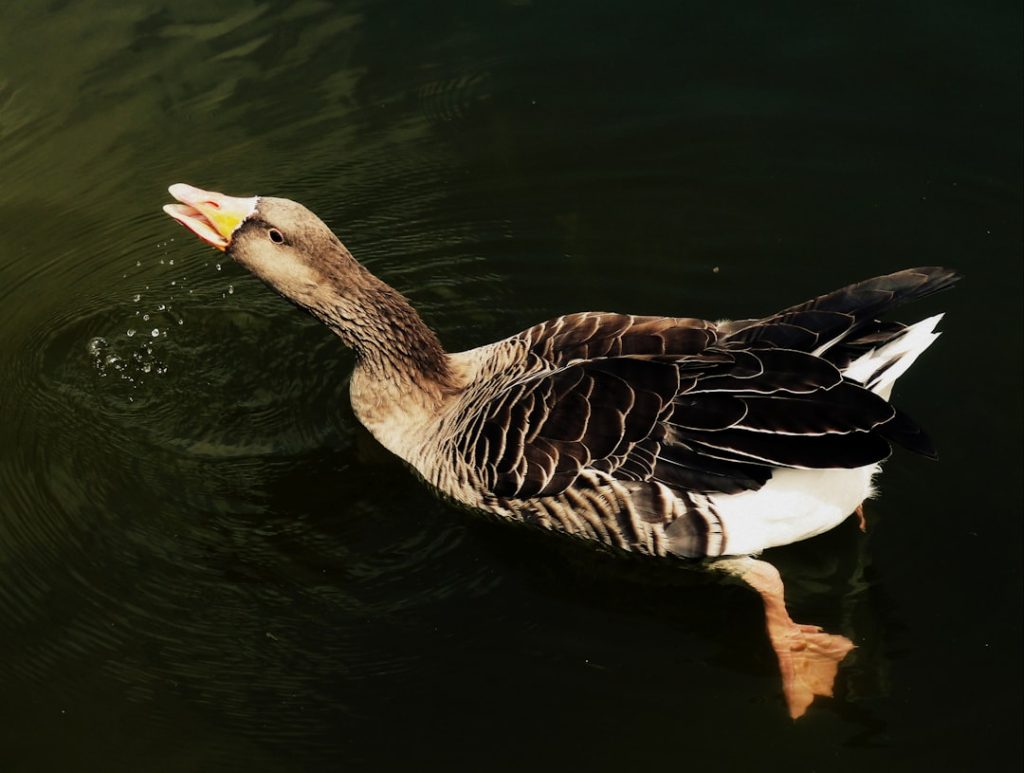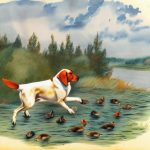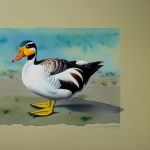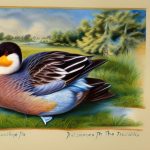Swedish duck breeds are a group of domestic duck breeds that originated in Sweden. These ducks are known for their hardiness, adaptability, and excellent foraging abilities. They are popular among farmers and homesteaders for their dual-purpose nature, as they are valued for both their meat and eggs. Swedish duck breeds come in a variety of colors and patterns, and they are known for their calm and friendly temperament, making them a great addition to any backyard flock. These ducks are also known for their ability to thrive in cold climates, making them well-suited for the Swedish environment. Overall, Swedish duck breeds are a versatile and valuable addition to any farm or homestead.
Table of Contents
- 1 History and Origins of Swedish Duck Breeds
- 2 Characteristics and Physical Traits of Swedish Duck Breeds
- 3 Popular Swedish Duck Breeds
- 4 Uses and Purposes of Swedish Duck Breeds
- 5 Care and Maintenance of Swedish Duck Breeds
- 6 Conservation Efforts for Swedish Duck Breeds
- 7 FAQs
- 7.1 What are the different Swedish duck breeds?
- 7.2 What are the characteristics of Swedish duck breeds?
- 7.3 What is the purpose of Swedish duck breeds?
- 7.4 Are Swedish duck breeds suitable for beginners?
- 7.5 What is the average lifespan of Swedish duck breeds?
- 7.6 Do Swedish duck breeds require special care?
Key Takeaways
- Swedish duck breeds are known for their hardiness and adaptability to various climates
- Swedish duck breeds have a long history dating back to the 19th century
- Swedish duck breeds are known for their distinctive physical traits such as their upright carriage and unique color patterns
- Some popular Swedish duck breeds include the Swedish Blue, Swedish Black, and Swedish Yellow
- Swedish duck breeds are valued for their meat, eggs, and as ornamental birds, and are also used for conservation efforts to preserve genetic diversity
History and Origins of Swedish Duck Breeds
The history of Swedish duck breeds dates back to the 19th century when various duck breeds were imported to Sweden from other European countries. Over time, these imported ducks were selectively bred to create the distinct Swedish duck breeds that we know today. One of the most well-known Swedish duck breeds is the Swedish Blue duck, which is believed to have originated from the Pomeranian duck breed that was brought to Sweden in the 19th century. The Swedish Blue duck quickly gained popularity in Sweden due to its excellent egg-laying abilities and calm temperament. Another popular Swedish duck breed is the Swedish Yellow duck, which is known for its striking yellow plumage and friendly disposition. These ducks were developed through selective breeding and have become an integral part of Swedish agriculture and homesteading. Overall, the history of Swedish duck breeds is a testament to the ingenuity and dedication of Swedish farmers and breeders in creating unique and valuable duck breeds.
Characteristics and Physical Traits of Swedish Duck Breeds
Swedish duck breeds are known for their distinctive physical traits and characteristics. One of the most notable features of Swedish duck breeds is their hardy and robust nature, which allows them to thrive in a variety of environments. These ducks have medium-sized bodies with a broad chest and a slightly upright carriage. They have a strong and sturdy build, which makes them well-suited for foraging and free-ranging. Swedish duck breeds come in a variety of colors, including blue, yellow, black, and white, with some breeds featuring striking patterns such as bibbed or barred plumage. Their plumage is dense and waterproof, which helps them stay warm and dry in cold and wet conditions. Swedish ducks also have a distinctive bill that is broad and slightly upturned, which is well-suited for their foraging habits. Overall, the physical traits of Swedish duck breeds make them well-adapted for a variety of farming and homesteading purposes.
Swedish duck breeds are also known for their calm and friendly temperament, making them a popular choice for backyard flocks. These ducks are docile and easy to handle, making them suitable for families with children or novice poultry keepers. They are also known for their excellent foraging abilities, as they are adept at finding their own food by grazing on grass, insects, and other natural sources. Swedish ducks are also good layers, with some breeds laying up to 200 eggs per year. Their eggs are large and have a rich flavor, making them highly prized by home cooks and bakers. In addition to their egg-laying abilities, Swedish duck breeds are also valued for their flavorful meat, which is lean and succulent. Overall, the characteristics of Swedish duck breeds make them a versatile and valuable addition to any farm or homestead.
Popular Swedish Duck Breeds
There are several popular Swedish duck breeds that are well-known for their unique characteristics and qualities. One of the most popular Swedish duck breeds is the Swedish Blue duck, which is prized for its excellent egg-laying abilities and calm temperament. These ducks have striking blue plumage with white bibs, making them a visually appealing addition to any flock. Another popular Swedish duck breed is the Swedish Yellow duck, which is known for its vibrant yellow plumage and friendly disposition. These ducks are valued for their dual-purpose nature, as they are good layers and produce flavorful meat. The Swedish Black duck is another popular breed that is known for its striking black plumage and excellent foraging abilities. These ducks are hardy and adaptable, making them well-suited for a variety of farming environments. Overall, these popular Swedish duck breeds are valued for their unique qualities and make a valuable addition to any farm or homestead.
Uses and Purposes of Swedish Duck Breeds
Swedish duck breeds are valued for their dual-purpose nature, as they are used for both meat and egg production. These ducks are good layers, with some breeds laying up to 200 eggs per year. Their eggs are large and have a rich flavor, making them highly prized by home cooks and bakers. In addition to their egg-laying abilities, Swedish duck breeds are also valued for their flavorful meat, which is lean and succulent. The meat of Swedish ducks is prized for its excellent flavor and texture, making it a popular choice for home cooks and chefs alike. In addition to their meat and egg production, Swedish duck breeds are also valued for their excellent foraging abilities. These ducks are adept at finding their own food by grazing on grass, insects, and other natural sources, making them a low-maintenance addition to any farm or homestead. Overall, the uses and purposes of Swedish duck breeds make them a versatile and valuable addition to any agricultural operation.
Care and Maintenance of Swedish Duck Breeds
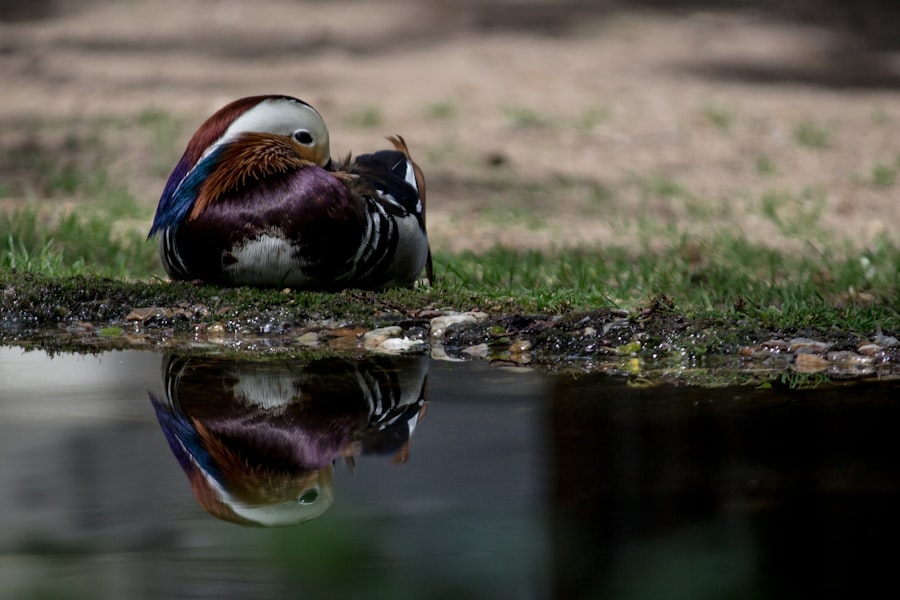
Swedish duck breeds are relatively low-maintenance and easy to care for, making them a popular choice for farmers and homesteaders. These ducks require access to fresh water for drinking and bathing, as well as a balanced diet that includes commercial feed as well as access to natural forage. They also require shelter that provides protection from predators and the elements, as well as nesting boxes for laying eggs. Swedish ducks thrive in free-range environments where they can graze on grass, insects, and other natural sources. They also benefit from regular health checks and vaccinations to prevent common poultry diseases. Overall, the care and maintenance of Swedish duck breeds is relatively straightforward, making them a practical choice for farmers and homesteaders.
In terms of breeding and reproduction, Swedish duck breeds are relatively prolific layers, with some breeds laying up to 200 eggs per year. They are also good mothers, with hens exhibiting strong maternal instincts when it comes to hatching and raising their young. Breeding programs for Swedish duck breeds focus on maintaining genetic diversity and preserving the unique qualities of each breed. Overall, the care and maintenance of Swedish duck breeds is relatively straightforward, making them a practical choice for farmers and homesteaders.
Conservation Efforts for Swedish Duck Breeds
Conservation efforts for Swedish duck breeds focus on preserving genetic diversity and promoting sustainable breeding practices. These efforts aim to maintain the unique qualities of each breed while ensuring that they remain viable for future generations. Conservation organizations work to raise awareness about the value of Swedish duck breeds and promote responsible breeding practices among farmers and homesteaders. They also work to establish breeding programs that focus on maintaining genetic diversity and preserving the unique qualities of each breed. Overall, conservation efforts for Swedish duck breeds play a crucial role in ensuring that these valuable ducks remain an integral part of agricultural heritage for years to come.
In conclusion, Swedish duck breeds are a versatile and valuable addition to any farm or homestead. With their hardy nature, excellent egg-laying abilities, flavorful meat production, and friendly temperament, these ducks offer a wide range of benefits to farmers and homesteaders alike. Through conservation efforts and responsible breeding practices, these unique duck breeds will continue to thrive and contribute to agricultural heritage for generations to come.
If you’re interested in learning more about Swedish duck breeds, you might also want to check out an article on PoultryWizard.com that discusses the best location for a chicken coop. Understanding the ideal environment for poultry can be beneficial when considering the housing needs of various bird breeds. You can find the article here.
FAQs
What are the different Swedish duck breeds?
There are several Swedish duck breeds, including the Swedish Blue, Swedish Black, and Swedish Yellow.
What are the characteristics of Swedish duck breeds?
Swedish duck breeds are known for their hardiness, good foraging abilities, and calm temperament. They are also known for their beautiful plumage and excellent egg-laying capabilities.
What is the purpose of Swedish duck breeds?
Swedish duck breeds are primarily kept for their eggs and meat. They are also popular for exhibition and ornamental purposes due to their attractive appearance.
Are Swedish duck breeds suitable for beginners?
Yes, Swedish duck breeds are generally considered to be good for beginners due to their hardiness and calm temperament. They are also relatively easy to care for.
What is the average lifespan of Swedish duck breeds?
Swedish duck breeds have an average lifespan of 8-12 years, depending on their care and living conditions.
Do Swedish duck breeds require special care?
Swedish duck breeds do not require special care, but they do need access to water for swimming and foraging. They also need protection from predators and proper shelter. Regular health checks and a balanced diet are also important for their well-being.
Meet Walter, the feathered-friend fanatic of Florida! Nestled in the sunshine state, Walter struts through life with his feathered companions, clucking his way to happiness. With a coop that’s fancier than a five-star hotel, he’s the Don Juan of the chicken world. When he’s not teaching his hens to do the cha-cha, you’ll find him in a heated debate with his prized rooster, Sir Clucks-a-Lot. Walter’s poultry passion is no yolk; he’s the sunny-side-up guy you never knew you needed in your flock of friends!

